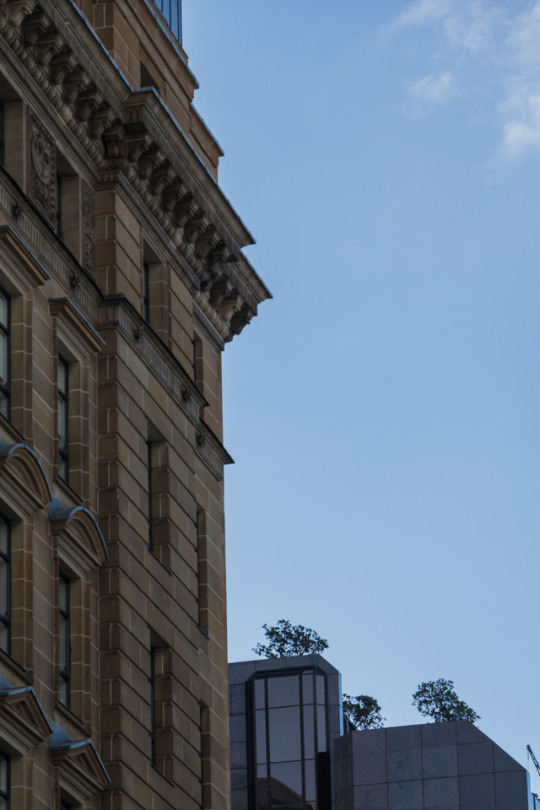Text
CCDN331 Creative Manifesto Iteration
Currently I am exploring the wellington billboard and advertisements through photography and attempting to capture the misinterpretation they cause. I am still currently open to two options to further, showing this subject through street art or through another means such as advertisements. For the display I plan on having 9 final photos displayed in a 3×3 grid format expressing the ideas of the writen manifesto visually
0 notes
Text
Manifesto CCDN331
Gamifications impact on design thinking is creating an impassable stage in design practice as the inclusion of ‘playful design’ in many projects is continuously limiting the emotional impact of the design to only one field.
Photography through Design
· Has benefited hugely through capturing different cultures around the world and giving an insight into how another individual experiences life (similar to that of ethnographic research).
Inspire to Interpret
· The key to inspiration is often through the captured images of another’s work as many designers in the 21st century find something in another’s work that was not originally considered, often through reinterpretation. McDonnell explains that:
“From a perspective which seeks to understand design as a social activity, taking place in the natural setting of design practice from which it cannot sensibly be separated, it is clear that empirical studies must be the primary source for formulation and evaluation of design descriptions and models of the design process.” (J, McDonnell. Design studies: Descriptive models for interpreting design. 1997)
Flaws within Design?
· Through the connection gamification is establishing in the workplace through photography, it is creating multiple points in which it could create flaws in design practice. Zichermann states:
“Gamification may be a new term, but the idea of using game-thinking and game mechanics to solve problems and engage audiences isn’t exactly new”. (G, Zichermann. Gamification by design: Implementing game mechanics in web and mobile apps. 2011)
Playful Design as an Aid, or Overuse?
· ‘Playful design’ is creating similarities with gamification through the growth of design thinking. Gamification can be seen increasing throughout many aspects of the modern city culture, while it can be used as a motivating tool, there must be a stage in where it becomes an overuse? Kapp explains that:
“A topic like gamification does not remain static, it is continually evolving as technology and our understanding of how gamification can foster learning and collaboration continue to grow”. (K.M, Kapp. The Gamification of Training: Game-Based Methods and Strategies for Learning and Instruction. 2012)
Marketing and Gamification
· Through the lense of photography the use of gamification as a marketing tool is at large risk of becoming a negative impact on design practice. This is due to the combination of misunderstood design strategies (such as gamification) being used as marketing techniques. Huotari and Hamari describe that:
“Gamification is a form of service packaging where a core service is enhanced by a rules-based service system that provides feedback and interaction mechanisms to the user with an aim to facilitate and support the users’ overall value creation.”
Bibliography
Zichermann, G. (2011). Gamification by design: Implementing game mechanics in web and mobile apps. Retrieved from https://books.google.co.nz/books?hl=en&lr=&id=zZcpuMRpAB8C&oi=fnd&pg=PR7&dq=gamification+and+design+thinking&ots=UtT945s63d&sig=LQRJJ9unSTM5YQF-jgticRge2_w#v=onepage&q&f=false
McDonnell, J. (1997). Design studies: Descriptive models for interpreting design. Retrieved from http://www.sciencedirect.com/science/article/pii/S0142694X97000124
Kapp, K. M. (2012). The Gamification of Training: Game-Based Methods and Strategies for Learning and Instruction. Retrieved from https://books.google.co.nz/books?hl=en&lr=&id=M2Rb9ZtFxccC&oi=fnd&pg=PR12&dq=gamification+&ots=JwQg303BaK&sig=KLM2jJHaXlhTTUnAtfIpq9WQQHI#v=onepage&q=gamification&f=false
Huotari, K., & Hamari, J. (2011). Gamification from the perspective of service marketing. Retrieved from https://www.researchgate.net/profile/Kai_Huotari/publication/267942356_Gamification_from_the_perspective_of_service_marketing/links/56274fbb08ae4d9e5c4e792d.pdf
0 notes
Text
CCDN331 Design Manifesto (Draft)
I am passionate about photography and its relation to cultural issue. It inspires me how the camera as a tool, can become a lense to experience the world in more detail. For the last couple of years photography has become an increasingly more favourable pursuit of mine and its effect on social/cultural behaviour is indescribable as it is unique to the photographer. Photography has benefited hugely through capturing different cultures around the world and giving an insight into how another individual experiences life (similar to that of ethnographic research). My vision for design in future is that it becomes a more common and renowned means of work worldwide, and one of the best ways of showing design to be such an important addition to global marketing/tourism is through aspects of photography. The key to inspiration is often through the captured images of another’s work as many designers in the 21st century find something in another’s work that was not originally considered.
Culture, is captivated through the perspectives of many and exported/spread by the lense of cameras and an increasing amount through different means, such as phones. Gamifications impact on design thinking is creating an impassable stage in design practice as the inclusion of “playful design” in many projects is continuously limiting the emotional impact of the design to only one field. Gamification can be seen increasing throughout many aspects of the modern city culture, while it can be used as a motivating tool, there must be a stage in where it becomes an overuse? Through the lense of photography this use of gamification as a marketing tool is at large risk of becoming a negative impact on design practice.
0 notes
Text
CCDN331 ESSAY
THE AGE OF GAMES
Daniel Crewe
Project 3
CCDN 331, 2017 Stream A
Gamification, in today’s society is becoming an increasingly larger field. This growth is clearly related to the advancements in technology, although the word itself can have little to no relation to these new games as defining the word gamification, is to make something into an amusement by taking aspects of what would be considered a game such as teams/points/timers. Gamification itself is considered by many to be adding playful aspects that can often be encountered in a gaming environment and exporting/using those in unheard of places such as many adverts and billboards located throughout modern cities. The underlying issue with manipulating – people’s thoughts into a more playful mood is that it has become so popular and is border lining over manipulative. Zichermann states that gamification may be a new term, although it has been used for hundreds of years by military around the world by the use of War Games. He further goes onto state what Gamification is not to avoid misinterpretation. He continues to explain that Gamification itself is about creating a social connection and/or “loop” (Zichermann, G., & Cunningham, C. Gamification by design, 2011). Zichermann states that:
“In a social engagement loop, a motivating emotion leads to player re-engagement, which leads to a social call to action, which flows to visible progress and/or rewards, which loops back round to a motivating emotion.” (Zichermann, G &
Cunningham, C. Gamification by design. p67, 2011)
This loop creates impacts on gamification’s relation to design through technology and art by manipulating emotions to the viewers, often designers create products with the intention of multiple purposes and the product often leaves the viewer with more than one emotion. Not simply a “motivating emotion” as the loops purpose is, stated by Zichermann. (Zichermann, G & Cunningham, C. Gamification
by design. p67, 2011)
As an outside perspective, it seems as though design practice has more benefits for gamification than the reverse although both open new doors and ideas for each field of practice. Design is seen to be benefiting gamification more so than the reverse due to the more places that gamification can be used, for example the recent growth in use of 3D printing in the design field opens up new ways gamification can be publicized and/or taken advantage of for marketing purposes. Gamification opens up opportunities for designers through the ideas of taking aspects of the gaming environment and merging them within products, although through doing this it endangers designers to, in time, become limited to create for only one purpose, playful design. If this were to happen the transition would be very gradual and never fully complete as design practice is an ever changing and adapting field, keeping itself connected to cultural roots as well as constantly updating as technology does. This leads to the point that gamifications impact on design could be negative due to all the companies using it as a way of marketing, whereas design could hugely widen gamification’s ideas through many new aspects of product creation.
Gamifications exportation through social media and marketing techniques has become so common now that it is considered a mainstream way of publicising products. Media such as Facebook, YouTube and Twitter are filled with advertisements using game related elements to intrigue the user to involve them within the marketing scheme. Gamification at its core is an interesting new component to design practice and creates many opportunities for ideas although the issue within the growth of the subject is that the use of it is being taken advantage of. This is causing gamification to become solely a marketing technique instead of a new creative element for designers. Walz explains that “Gamification I suggested is primarily a practice of marketers and consultants who seek to construct and then exploit an opportunity for benefit.”
(Walz, S. P., & Deterding, S. The gameful world: Approaches, issues, applications. p65, 2014). What is being expressed here is that gamification is already being considered by many to be simply a marketing tool although it has potential to integrate well with design practice as another cultural element. Unfortunately the case of gamifications future relation to design is unknown, for now the issue lies with the question of is the term becoming too marketable.
First understandings of gamification is understood that it is a term created to portray aspects of game design in non-game related environments which lead to the path of gamification becoming a
marketing technique and/or a design element. Walz explains that gamifications success or failure through the aspects of modern technology and design practice to market itself does not fault the trend of its overuse:
“The success or failure of the gamification initiative is not of concern to the gamification consultant, if success or failure refers to the accomplishment of fundamental goals. Rather the goal is to establish a solution that can be applied in many contexts, both increasing the possible customer base for services and increasing the demand for such activities by forming them into a trend executives cannot ignore if they want to appear up-to-date.” (Walz, S. P., & Deterding, S. The gameful world: Approaches, issues, applications. 2014)
Gamification success could be a relation to the amount of attention social media has recently been getting. Apps such as Facebook, Instagram and Twitter have recently gone through fazes of advertising through gamification related techniques such as liking a post or getting rewards for a certain amount of comments on a post. If analysed in further detail programmes such as Facebook could be considered more of a game related addiction:
“Researchers have linked Facebook use to specific individual characteristics. People scoring high on narcissism tend to be more active on social network sites, as social network sites provide an opportunity to present oneself in a favorable way in line with one’s ideal self” (Torsheim, T., Brunborg, G. S., & Pallesen, S. Development of a facebook addiction scale. 2012)
What is being explained here is relatable to that of a game in which the player creates an ideal avatar of themselves for the environment they are placed in, similar with Facebook. The user tends to show the best aspects of oneself which is understandable to avoid criticism from peers although that does not stop it from showing clear aspects of gamification. As more options of portraying the best of oneself through social media are being updated such as YouTube and Instagram, the market and creators/designers seem to be getting manipulated by the changes these popular apps make. All of which use similar aspects of gamification to Facebook which then leads the user essentially to simply follow the market as designers are with the popularity of gamification.
I understand that design practice clearly assists gamification in becoming a more common topic than the reverse, in some aspects it seems as though gamification has become an invasion to designer’s perspectives on their own work. In some forms it seems as though gamification has developed into graffiti over the ideas of design practice for example Bocchignano’s ideas of filling the cracks throughout classic cites with Lego pieces.
Bocchignano, V. V. [Plastic Construction]. Retrieved from https://urban360.me/2012/08/24/ifurban-life-is-a-game-smart-cities-arethe-playgrounds/
While being a very interesting concept to cover the cracks of old cities such as Rome which Bocchignano bases himself in, it is difficult to interpret his perspective other than his creative ties to gamification as putting modern colourful Lego art on thousand year old building cracks could seem rather disrespectful for some.
It is stated that:
“Plastic construction pieces are used to repair and fill holes in broken walls. Thanks to the generous support of numerous foundations, organisations and privates a worldwide network of participation has since been created.” (Vormann, J. Dispatchwork - Jan Vormann. 2007)
What is expressed here is describing that Bocchignano created a trend which has spread around the world and become a fashion globally ranging from places such as New York through to Paris. This is a prime example that gamification can so easily become a movement and get an unexpected amount of attention, Bocchignano undeniably created this work in the hopes that it would continue as it is a playful and “fun” trend that he set.
Gamification is a genuinely intriguing topic and it is unfortunate that such a subject often creates a negative impact on classical and/or historical design. I believe in the example of Bocchignano’s work in Rome, one of the most historical cities in the world has been grieved with graffiti so to speak. The idea of reconstructing the missing pieces with modern toys (Lego) is interesting although taken too far, it is blocking out the viewers perspective and manipulating it to become a more playful one. I do understand the ideas of why it could be an interesting concept to create but the legacy of the ancient architecture/design is being changed into something else when combined with aspects of modern technology.
Gamification is creating issues for itself too, reflecting back to what Walz is describing that “Bullshit enters the picture in the space in between, where games become a business opportunity for those who might harness the fear to help corporations believe they are benefiting from the power”. (Walz, S. P., & Deterding, S. The gameful world: Approaches, issues, applications. 2014) what Walz is describing here makes it clear that Gamification is not solely limited to problems related to design/architecture; it also effects the other end of the spectrum being the games themselves. This is due to the problem that if there are so many playful game aspects occurring in none game environments, it is leaving the public with the question that is there a need to go out and buy a game to experience that sense of achievement. Causing the issue that corporations and business’s overusing gamification as a marketing technique for their products may also do the opposite by decreasing the attention and/or income that games themselves are receiving.
Overall, I understand gamification to be a topic which is currently becoming a centre point of attention for a widespread community although mostly designers and corporations which it currently seems to be effecting most. It is uncertain what the future of gamifications impact on design practice will be although I believe that once it begins to be treated less as a topic and more as a possible issue for contemporary design it will be very different from what it currently is. Clearly gamification has caused some controversy which has a high possibility with the advancements in technology and marketing techniques to become very common throughout many aspects of life. In some cases, it already is such as in many workplaces people are rewarded for working harder than their peers. Although examples such as this do inspire people to work harder, it also creates a negative impact on the workers that are not always being the “best”. To conclude, gamifications impact on design practice continues to often limit production simply to playful design. This raises many problems as design should not be limited simply to one emotion (happiness) often, products created are targeted to express many other emotions such as Surprise, Trust or Anticipation. I believe design practice will always be unique to whomever it is created by and not limited to gamification based production, although I do think that it could definitely become an issue if not considered currently. That is the underlining issue with the problem I believe, gamification is just not considered to be a problem and is more thought of as a benefit to the workplace which could most definitely be true, it just needs consideration before becoming a more common topic. To understand the term, would be to understand every part of it which is difficult as while technology and marketing techniques change, gamification adapts.
WORD COUNT: 1965
(GRAPHIC ELEMENT DID NOT WORK THROUGH TUMBLR)
References
Zichermann, G., & Cunningham, C. (2011). Gamification by design: Implementing game mechanics in web and mobile apps. Retrieved from https://books.google.co.nz/books?hl=en&lr=&id=zZcpuMRpAB8C&oi=fnd&pg =PR7&dq=gamification&ots=UtT754w7al&sig=TI9Sgc5fePQxXC_pbakYK2bdgfw# v=onepage&q=gamification&f=false
Kapp, K. M., Blair, L., & Mesch, R. (2014). The gamification of learning and instruction fieldbook: Ideas into practice. Retrieved from https://books.google.co.nz/books?hl=en&lr=&id=M2Rb9ZtFxccC&oi=f nd&pg=PR12&dq=gamification&ots=JwQe389BaP&sig=SOzNgjH9bdfcc5TA4MaP9P
ATd9k#v=onepage&q=gamification&f=false
Walz, S. P., & Deterding, S. (2014). The gameful world: Approaches, issues, applications. Retrieved from
https://books.google.co.nz/books?hl=en&lr=&id=KDxTBgAAQBAJ&oi=fnd&pg =PA65&dq=gamification&ots=hJ93XR5JIY&sig=6RaqoEGHcCRCW573cCPxvNAAatE
#v=onepage&q=gamification&f=false
Vormann, J. (2007). Dispatchwork - Jan Vormann. Retrieved from https://www.janvormann.com/testbild/dispatchwork/
Torsheim, T., Brunborg, G. S., & Pallesen, S. (2012). Development of a facebook addiction scale. Retrieved from
http://journals.sagepub.com/doi/pdf/10.2466/02.09.18.PR0.110.2.501-
517
0 notes
Text
CCDN331 Project 3 Statement
Gamification, in today’s society is becoming an increasingly larger field. This growth is clearly related to the advancements in technology, although the word itself can have little to no relation to these new games as defining “gamification” is to make something into a “game” by using few aspects of what would be considered a game such as teams/points/timer.
Bibliography:
Zichermann, G., & Cunningham, C. (2011). Gamification by design: Implementing game mechanics in web and mobile apps. Retrieved from https://books.google.co.nz/books?hl=en&lr=&id=zZcpuMRpAB8C&oi=fnd&pg=PR7&dq=gamification&ots=UtT754w7al&sig=TI9Sgc5fePQxXC_pbakYK2bdgfw#v=onepage&q=gamification&f=false
Zichermann states that gamification may be a new term, although it has been used for hundreds of years by military around the world by the use of War Games. He also goes onto state what Gamification isn’t so that there is no misinterpretation. He concludes that Gamification itself, is about creating a social connection and/or “loop”.
Kapp, K. M., Blair, L., & Mesch, R. (2014). The gamification of learning and instruction fieldbook: Ideas into practice. Retrieved from https://books.google.co.nz/books?hl=en&lr=&id=M2Rb9ZtFxccC&oi=fnd&pg=PR12&dq=gamification&ots=JwQe389BaP&sig=SOzNgjH9bdfcc5TA4MaP9PATd9k#v=onepage&q=gamification&f=false
Kapp suggests that people like playing games and that a recent survey showed that 55 percent of people would be interested in working for a company that offered games as a way to increase productivity. This interests me and relates to what I will extend on in the essay as before discovering Kapp’s book I was under the impression that the number of people wanting to be more playful at work would be more one sided, not so balanced/equal.
0 notes
Text
Critical Perspective - CCDN331 P2
Haiku:
“Looking up above
Seeing the evolving now
Understanding change”
Relph explains that the idea of a “city” has changed drastically in the past 140 years. Today’s society is more about getting from a to b without understanding the elements of one’s surrounding. In the past people were more observant and patient to comprehend a “slower moving” city environment, whereas now it is more of an “urban jungle” and often a hectic mess of industry to be consumed in.
My aim was to create a blend between the old and new structures of wellington CBD, in tail this showed the contrast of the city and how it is constantly updating. It also helped me as a “Flâneur” to comprehend my surroundings in ways which I had not previously understood. Through using the process of a flâneur, the idea of my “Critical Selfie” changed from attempting to create a blend between old and new, to more of an understanding of what was already present in the wellington skyline and how these new modern high-rise buildings impose upon the more classical structures throughout the city. I experienced this contrast by simply “looking up above” as the Haiku states. Through using these ideas as a flâneur, it is clear that the relation of these classic buildings in the city lined up along Lambton Quay beside the high-rises is a battle for attention and an ever growing contrast.
Citation:
Relph, E. (1987). The Modern Urban Landscape, 1-274. Retrieved from https://books.google.co.nz/books?hl=en&lr=&id=cWLtWKEnq3EC&oi=fnd&pg=PP9&dq=neo+classical+vs+modernist+cityscape&ots=0-l-7mA2_D&sig=qgSuenLDHjaX8EVP5fs5rJ9uJ3I#v=onepage&q&f=false
0 notes
Photo








My aim is to create a blend between the old and new structures of wellington CBD. In tail this will also show the contrast and how the city is constantly updating.
Literary review summary:
Relph explains that the idea of a “city” has changed drastically in the past 140 years. Today’s society is more about getting from a to b without understanding the elements of ones surrounding. In the past people were more observant and patient to comprehend a “slower moving” city environment, whereas now it is more of an “urban jungle” and often a hectic mess of industry to be consumed in.
Citation:
Relph, E. (1987). The Modern Urban Landscape, 1-274. Retrieved from https://books.google.co.nz/books?hl=en&lr=&id=cWLtWKEnq3EC&oi=fnd&pg=PP9&dq=neo+classical+vs+modernist+cityscape&ots=0-l-7mA2_D&sig=qgSuenLDHjaX8EVP5fs5rJ9uJ3I#v=onepage&q&f=false
0 notes
Link
Destiny is a prime example of an incomplete game. Myself being someone who very much enjoyed playing destiny in the past have come to the conclusion that this game was an extreme time waster and endless grind of playing the same thing over and over again
0 notes
Link
Halo is a prime example of good game design as it has an expansive narrative along with the ability to make an endless amount of sequels
0 notes







